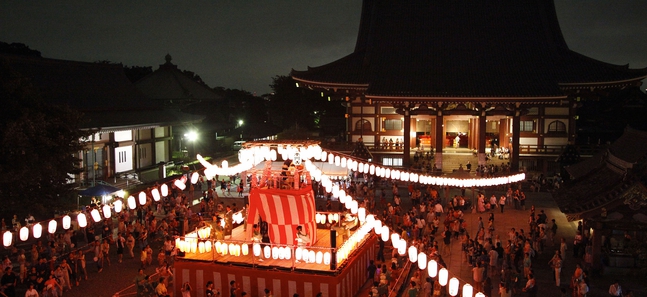
Posted: Tue Jun 30 2015
The rainy season is almost over, which means we're about to enter the serious summer heat here in Tokyo. One of the best ways to make those steamy nights a little more bearable is to visit some of the many summer festivals taking place all over the city. The celebrations start around Tanabata (July 7) and continue with festivals dedicated to everything from flowers to wind bells, while August sees big-time events like the awa-odori dances, Asakusa's great samba carnival and the classic Azabu-Juban Matsuri. Once again, we've put together a list of all the major festivals – now's your turn to experience the magic of summer and fill up on delicious matsuri food. Finally, remember that this roundup features only the bigger events: smaller-scale local festivals can be found in practically every single neighbourhood, and are also well worth attending.
Tanabata
Zojoji Tanabata Festival
Until July 7 | Zojoji Temple
Legend tells of the star-crossed lovers Orihime and Hikoboshi who, separated by the Milky Way, are only able to meet once a year on the night known as Tanabata. This festival is synonymous with gaudy streamer decorations, wafts of romance, and a ritual in which people write wishes on strips of paper (tanzaku) and tie them to bamboo branches. Zojoji's version of the celebration features a candle light-up, naturally accompanied by the requisite matsuri stalls and whatnot.
Event details
Tokyo Daijingu Tanabata Kigansai
July 7 | Tokyo Daijingu
Make a wish on 'the evening of the seventh' at Tokyo Daijingu's Tanabata celebration, where you can write your wish on a tanzaku slip and hang it on one of the bamboo branches at the shrine. The line of 'wish trees' will also be lit up between July 1 and 7, making for a magical nighttime atmosphere.
Event details
Toshima Tanabata Matsuri
August 4-8 | Toshima Chuo-dori shopping arcade
The extensive Toshima shopping arcade north of Oji Station is perhaps best known for this annual Tanabata celebration, which sees the entire 600m street decorated for the occasion. A variety of events will be taking place throughout the end of July and early August, but the highlight is on August 8, when a samba parade lends some Brazilian flavour to the streets of Kita-ku.
Event details
Shitamachi Tanabata Matsuri
July 3-8 | Kappabashi Hon-dori
Asakusa's Kappabashi – the famed Mecca for Tokyo chefs looking to kit out their kitchens – is festooned with vibrantly coloured streamers and decorations during this annual summer festival. Though it runs from July 3 to 8, the best time to visit the Shitamachi Tanabata Matsuri is at the weekend (July 4 and 5), when local businesses put out stalls and hold parades and street performances.
Event details
Fussa Tanabata Matsuri
August 6-9 | Between Fussa and Ushihama stations
You'll find one of Tokyo's longest running Tanabata celebrations in the western town of Fussa: while other such festivals tend to be fairly low-key affairs, this one (now into its 65th year) is packed with events, including a 'Princess Orihime contest', yurukyara appearances, parades and plenty of irresistible food.
Event details
Asagaya Tanabata Matsuri
August 5-9 | Around Asagaya Station
Asagaya has been holding its distinctive Tanabata festival for more than 60 years now, but the event has moved with the times: in recent years, the papier-mâché decorations dangling from the ceiling of the shopping arcades have included Buzz Lightyear, Godzilla and the lead characters from Disney's Frozen. The decorations are there to see all day long, but many people wait until dusk to go and enjoy them, accompanied by food and libations sold at stalls all around the station area.
Event details
Bon Odori
Gessoji Monzen-Ichi & Bon Odori
August 1 & 2 | Gessoji
The Gessoji summer festival is a small Kichijoji classic, taking place on the temple grounds and along the Sun Road shopping arcade on the north side of the station, and featuring everything from bon odori performances to a watermelon-cutting competition, as well as the obligatory stalls hawking matsuri food and drink.
Event details
Ikegami Honmonji Bon Odori
August 4 & 5 | Ikegami Honmonji
Climb up the hill to Ikegami Honmonji for traditional Obon dance performances, delectable festival food and a lottery for kids – join in with the dancers and you'll receive a free traditional fan as a reward. If you're heading over early, make sure to catch the yukata parade taking place on Honmonji-dori from 6pm on August 4.
Event details
Bon Odori in Minato Mirai
August 14 & 15 | Rinko Park
Dance the traditional way at Rinko Park's Bon Festival, where you can also catch a taiko drumming performance, snack on above-average festival grub, get buzzed on nihonshu and take in the sweaty summer atmosphere of Yokohama. Definitely an event enjoyable for visitors of all ages.
Event details
Roppongi Hills Bon Odori
August 21-23 | Roppongi Hills Arena
This lively Roppongi Hills event features traditional Obon dance performed in a purpose-built arena by yukata-clad dancers. Decorations add to the atmosphere, while the surrounding stalls cater to hungry crowds with all the usual festival fare, as well as gourmet choices provided by area restaurants.
Event details
Kinshicho Kawachi Ondo Bon Odori
August 26 & 27 | Katagawa Shinsui Park
Kawachi Ondo is a Japanese folk song that originated in what is now the Osaka region and later spread all over the country. The lyrics can be modified to touch on anything from epic tales to current events, and the best singers are able to improvise freely. This Kinshicho festival is where to get a comprehensive introduction to the art of Kawachi Ondo, all the while enjoying the dance and yukata contests and feasting on classic festival grub.
Event details
July festivals
Iriya Asagao Matsuri (Morning Glory Festival)
July 6-8 | Iriya Kishimojin
It's worth getting up early – as in crack-of-dawn early – for Japan's largest morning glory festival, held in and around Iriya Kishimojin temple. Around 400,000 people head to the event each year, perusing the 120 flower booths and hundred-odd festival stalls on display, so prepare to battle some serious crowds.
Event details
Asakusa Hozuki-Ichi
July 9 & 10 | Sensoji Temple
An Edo-era legend holds that paying one's respects at a temple dedicated to the bodhisattva Kannon on shimanrokusen-nichi (July 10) will count for the same as 46,000 such visits on any other day. Such convenience obviously appealed to Edoites, who never passed on the opportunity to receive a few extra blessings. The Hozuki-Ichi, named after the flower that resembles a red paper lantern, takes place over this lucky pair of days and will see up to 100 flower stalls set up around Sensoji Temple. Special charms are also sold at the temple during the festival, so remember to check out the selection.
Event details
Ueno Summer Festival
July 11-August 9 | Shinobazu Pond and surroundings
Ueno's natsu matsuri kicks off for real with a parade down the area's central street on July 18, while the rest of the event period includes happenings like the picturesque toro nagashi ceremony, in which paper lanterns are floated on Shinobazu Pond. There will be market stalls in the park throughout the four weeks of the festival selling antiques, potted plants and more, while open-air gigs and other performances take place at Ueno Park's open-air stage almost every day.
Event details
Fuurin Matsuri
July 11-August 2 | Nishiarai Daishi
Find a pretty wind bell made of glass at this annual festival taking place at Adachi's Nishiarai Daishi temple. Craftspeople from all over the country will be peddling their wares, which exhibit a staggering variety of colours, shapes and sounds – find the perfect one just for you, or simply walk around the area and take in the summery atmosphere.
Event details
Mitama Matsuri
July 13-16 | Yasukuni Shrine
Around 300,000 people flock to Yasukuni Shrine during its annual Mitama Matsuri, one of Tokyo's biggest Obon festivals. First held in 1947, the festival is best known for the 30,000 lanterns that light the way to the shrine each evening – so don't forget your camera. There are also mikoshi parades, concerts and traditional dance performances held over the four days, although the food and drink stalls have unfortunately been banished from this year's edition.
Event details
Kawasaki Daishi Fuurin-Ichi
July 17-21 | Kawasaki Daishi
Annually held at Kawasaki Daishi temple, this festival is dedicated to traditional Japanese wind bells and has been going on for the better part of two decades now. Fuurin craftspeople from Hokkaido to Okinawa peddle their wares, there's a recycling corner for old and decrepit bells, and tasty festival food is of course also available.
Event details
Tokyo Hula Festival in Ikebukuro
July 17-19 | Ikebukuro West Gate Park
Spreading out all over Ikebukuro, the annual Hula Festival paints the area in distinctly Hawaiian colours. Outdoor gigs by Hawaiian bands and a dizzying variety of food and drink stalls complement the main event: 152 teams and up to 3,900 dancers will be showing off their hula skills on stage. If you feel like swinging your hips too, start at the hula workshop held by Hawaiian master Tracie Lopes or join the open Hula Night.
Event details
Edogawa Goldfish Festival
July 18 & 19 | Edogawa Shizen Zoo
The Edogawa area has been known for its goldfish breeding since the late 1800s, and this festival also boasts decades of history. Stroll around admiring the shiny specimens, buy some for your own aquarium, or try the kingyo sukui (goldfish scooping) competition.
Event details
TV Asahi Roppongi Hills Summer Station
July 18-August 23 | Roppongi Hills Arena
Fan of TV Asahi's shows? You'll have to head to Roppongi Hills during this event, which takes over the entire area with everything from gigs and screenings to food stalls and shops. You'll be able to find limited-edition goodies themed on popular programmes, while imbibers will want to sit down on the Mohri Garden's floating deck for a brew at the 'premium' beer garden. Finally, fans of mind-bending idol group Momoiro Clover Z will find the special exhibition up at Tokyo City View worth a look.
Event details
Sumomo Matsuri
July 20 | Okunitama Shrine
According to legend, the warlord Minamoto no Yoriyoshi and his son Yoshiie stopped to pray for victory in the Zenkunen War (1051-1063) at this Fuchu shrine. Their wish was eventually granted, and the Sumomo (named after the plum that Yoriyoshi is said to have offered to the gods) festival began. You'll be able to try the plums for yourself at the many food stalls set up on the grounds, and if you're an amateur farmer, don't forget to participate in waving a fan decorated with drawings of crows – this is supposed to help keep the pesky birds away from your crops.
Event details
Kagurazaka Matsuri
July 22-25 | Kagurazaka-dori and surroundings
Usually one of Tokyo's most refined neighbourhoods, Kagurazaka gets a little unruly each July, as hordes of yukata wearers and awa-odori dancers flood the streets for four days of traditional festivities. On the first two evenings of the Kagurazaka Matsuri, you can pick up a Chinese lantern plant at the market in Bishamonten (Zenkokuji) temple, as well as join a guided tour of the area (which includes a free commemorative snap if you're wearing a yukata). But the main action comes on Friday and Saturday evenings, when teams of rowdy dancers make their way through the area. Finally, if you're still undecided on your outfit, get this: all yukata-wearers will receive special discounts at many of the shops and restaurants along Kagurazaka-dori.
Event details
Shinbashi Koichi Festival
July 23 & 24 | Shinbashi Station and surroundings
Shinbashi gets into the summer spirit again at this two-day festival of dancing, boozing and taiko drumming. The highlight is the yukata beauty contest on Friday evening (6.30pm start), the winner of which stands to walk away with ¥200,000 and a four-night trip to Hawaii. There'll be Bon Odori dancing both evenings, along with a range of food stalls and stage entertainment, and if you head to the fourth floor of the New Shinbashi Building you'll find an evening beer garden that runs from 5pm to 9pm.
Event details
Kichijoji Fureai Festival
July 23 & 24 | Tokyu Kichijoji
Taking over the plaza on the north side of Kichijoji's Tokyu department store for the 41st time this year, the Fureai festival entertains locals with ukulele and taiko drum performances, hula dancing and bon odori (from 6.30pm). The many stalls selling everything from food and drink to fun variety goods should not be forgotten either.
Event details
Shinjuku Eisa Festival
July 25 | Shinjuku Station East Exit, Shinjuku-dori and surroundings
Eisa is a form of Okinawan dance usually performed to mark the end of the Obon period. Like all things Okinawan, it's been enthusiastically embraced by the rest of the country, and this Shinjuku parade proves a good example. More than 20 eisa dance troupes are expected to take to the streets around the east exit of Shinjuku Station to beat portable taiko drums and twirl their way through the crowds – a colourful and noisy event to brighten your weekend. Slap on the sun cream, grab yourself a handheld fan and get there early: it's guaranteed to be crowded.
Event details
August festivals
Hachioji Festival
August 7-9 | Area around the north side of Hachioji Station
19 floats and portable shrines are carried around the north side of Hachioji at this summer festival, one of the top events of its kind in the Kanto region. When rival floats pass, their bands attempt to throw each other off their groove in a musical face-off known as buttsuke – a distinctive Hachioji tradition. Also look out for taiko drummers, ice sculptures, dragon dancers and more in the course of the three-day fest.
Event details
Asagaya Bali Dance Festival
August 1 & 2 | Asagaya Shinmeigu Shrine
Asagaya's Bali festival returns again this year, supplying two evenings of free gamelan and traditional Indonesian dance. Bonus marks to anyone who can explain exactly why there's a Balinese festival held in Asagaya every year, but it sounds like a pretty tempting proposition either way. Also, all that dancing is bound to make you hungry, so don't forget to check out the many food stalls selling Indonesian grub and beer, among other things.
Event details
Shimokitazawa Ichibangai Awa-Odori
August 7-9 | Shimokitazawa Ichibangai shopping arcade
Granted, it's a minnow compared to some competitors, but Shimokitazawa's version of the famed dancing-in-the-streets fest (originally from Tokushima) has a unique charm of its own. Now into its 50th year, the Shimokitazawa Awa-Odori sees teams of dancers romp along the neighbourhood's main shopping streets in the evening, then dazzle the assembled hordes with their own special routines later on. Be sure to hang around afterwards, when the area is engulfed in a wave of booze-sodden joie de vivre.
Event details
Fukagawa Hachiman Matsuri
August 13-16 | Tomioka Hachimangu
Known as one of the three ‘great festivals’ of Edo, the matsuri at Fukagawa's Tomioka Hachimangu shrine takes place annually, but is celebrated in all its glory only once every three years (next time is 2017). It's still worth heading over on any given year though, as the mikoshi processions, rowdy dance performances, and people throwing water on the participants (on Sunday Aug 16 only) make for plenty of fun.
Event details
Asakusa Toro Nagashi
August 15 | Sumida Park
First held at the 1946 'Festival of Recovery', the hauntingly beautiful Toro Nagashi lantern light-up was revived in 2005 after a 40-year break, and now takes place in Sumida Park between Azumabashi and Kototoibashi. You can light your own lantern for ¥1,500, but enjoying the magnificent view of glittering fires on the Sumida River on a cool summer night is completely free.
Event details
Asakusa Samba Carnival
August 29 | Central Asakusa
Teams of elaborately attired dancers flood the streets of Asakusa for Japan's largest samba carnival, shaking their tail feathers to the Brazilian beat as they work their way along Umamichi-dori, past the Kaminarimon and toward Tawaramachi. First held in 1981 in an attempt to revitalise the neighbourhood, the carnival is now one of Tokyo's more popular summer events, drawing half a million spectators.
Event details
Super Yosakoi
August 29 & 30 | Yoyogi Park and surroundings
The original yosakoi dance started life in Kochi in 1954, where it was intended to help revitalise the struggling post-war economy, and Tokyo's own Super Yosakoi festival has been going for over a decade now. The event sees 100-odd teams of brightly attired dancers trying to outdo each other as they strut their stuff to the rhythm of the naruko – a type of clapper that the people of Kochi originally used to scare birds away from their fields.
Event details
Koenji Awa-Odori
August 29 & 30 | Koenji and surroundings
Around 10,000 dancers pile out on to the streets of Koenji over the two days of the annual Awa-Odori, undoubtedly one of Tokyo's most energetic festivals – and one with crowds to match. The awa-odori ('awa dance') tradition can be traced back to Tokushima in Shikoku, where the story goes that the local daimyo plied his citizens with booze to celebrate the completion of the local castle in 1586, leading to a citywide outbreak of dancing in the streets. Whatever the accuracy of that tale, the enthusiasm was contagious, and Koenji has been holding a dance of its own since 1957. While the action starts at 5pm, you'll need to arrive much earlier if you want to snag one of the best viewing spots.
Event details
Azabu-Juban Noryo Festival
August 22 & 23 | Azabu-Juban shopping street
One of Tokyo's favourite traditional festivals, the Azabu-Juban Noryo Matsuri (noryo literally translates as 'cool of the evening') returns for two days of dancing, performances, live music and international food, along with snack and craft stalls set up by local businesses and visiting representatives from all over the country.
Event details
Tweets
- About Us |
- Work for Time Out |
- Send us info |
- Advertising |
- Mobile edition |
- Terms & Conditions |
- Privacy policy |
- Contact Us
Copyright © 2014 Time Out Tokyo










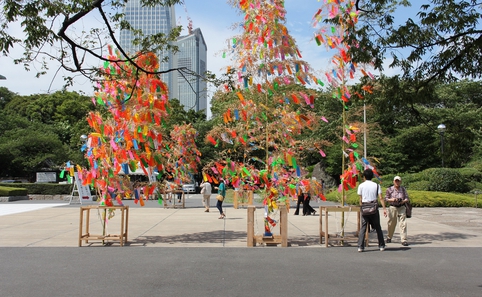
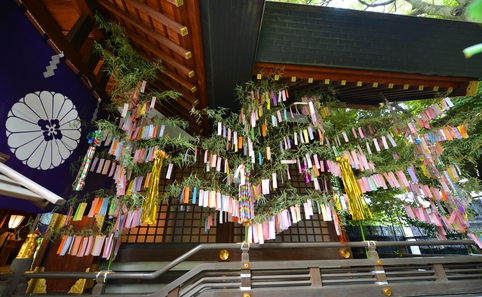

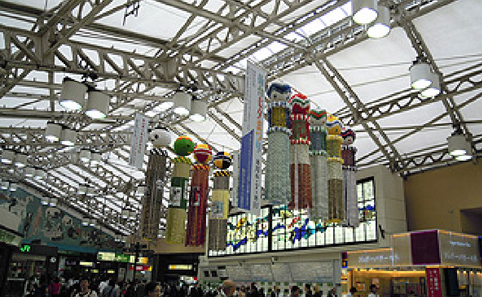
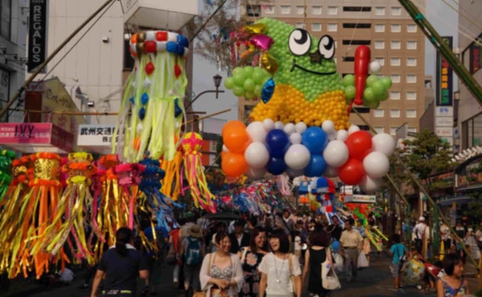
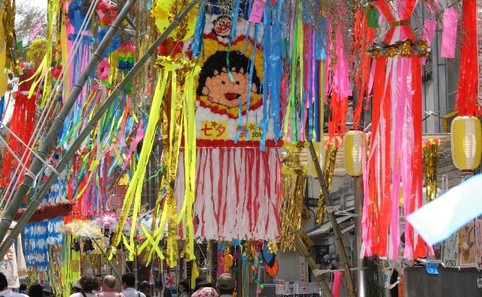




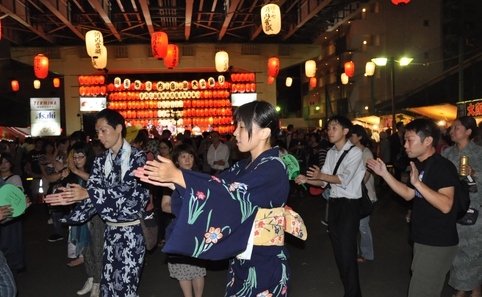

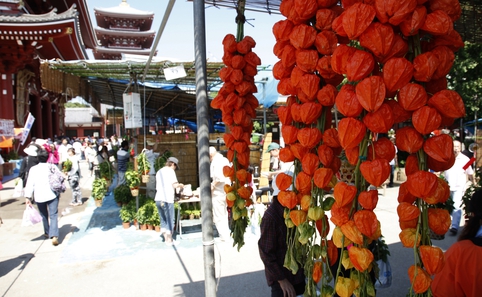

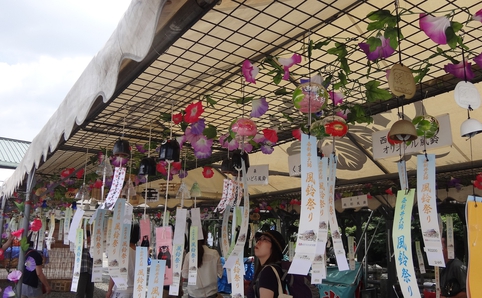
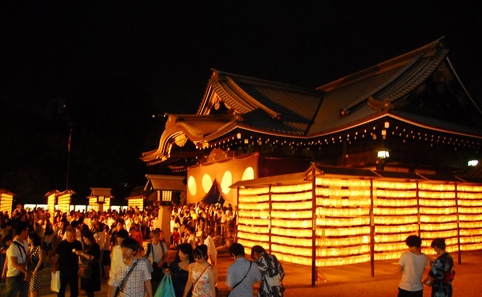

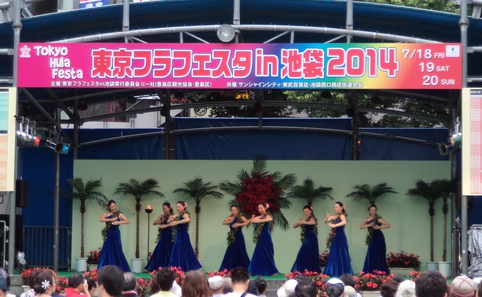

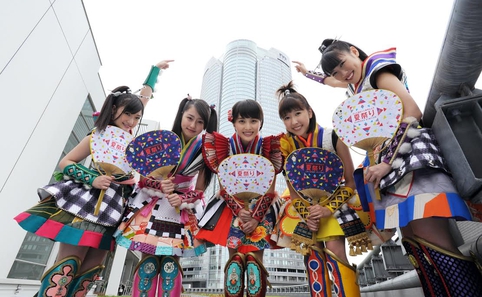

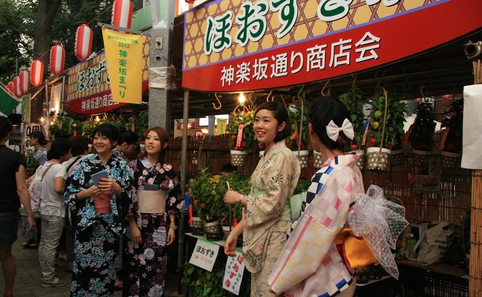
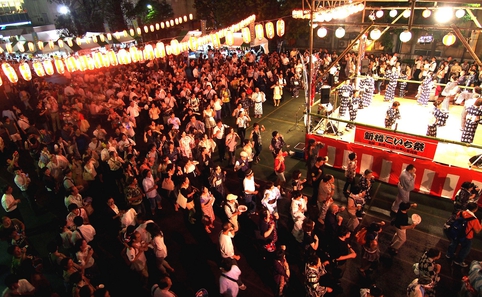
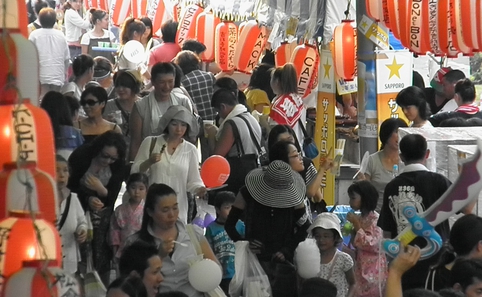

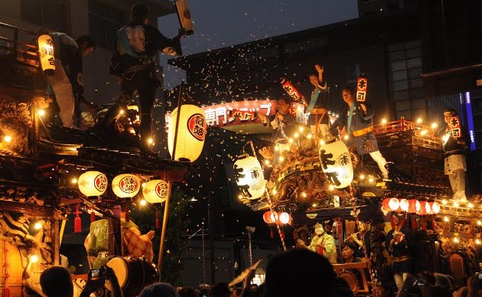


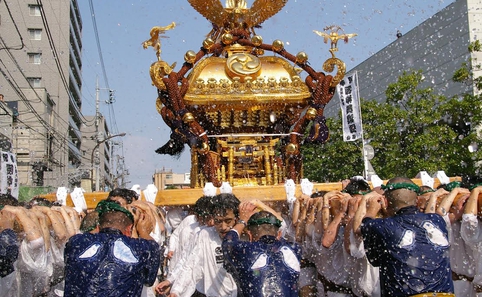

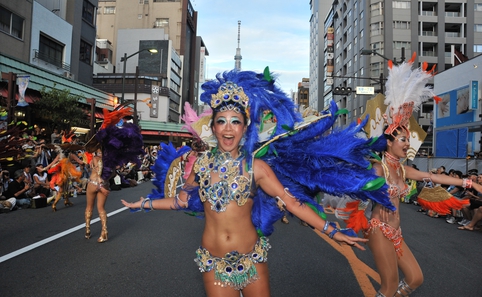

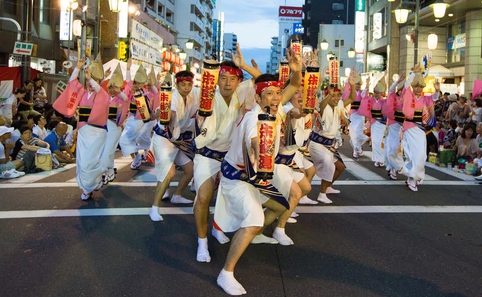

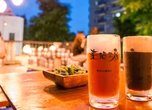
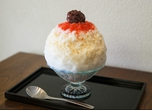


Add your comment